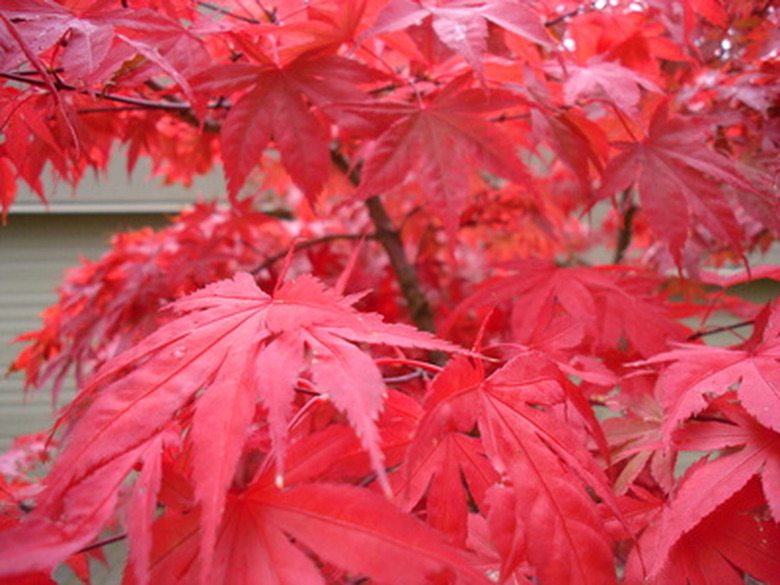Why Is The Bark Coming Off My Japanese Lace Leaf Maple Tree?
Lace leaf Japanese maple trees are a group of maple trees that exhibit sharply serrated leaves. A member of the Acer family of plants, lace leaf Japanese maple trees make attractive center plantings and interesting focal points in yards and landscapes. Peeling bark is common and is seldom reason for alarm.
Characteristics
Lace leaf Japanese maples reach an average mature size between 15 and 25 feet tall. This type of tree normally has a single main trunk that branches abruptly to form a thick, wide canopy containing delicate, textured leaves that give the tree its name. Like various types of maples, the foliage on lace leaf Japanese maples turns bright shades of red-orange and yellow during the autumn months. Depending on the variety, the bark can appear reddish, green, light brown or gray. Some specimens have thin bark that sheds and peels throughout the growing season.
- Lace leaf Japanese maple trees are a group of maple trees that exhibit sharply serrated leaves.
- Lace leaf Japanese maples reach an average mature size between 15 and 25 feet tall.
Peeling Bark
Bark that peels in long, vertical strips is commonly the sign of a healthy tree, especially in specimens like Acer griseum, whose common name is paperbark maple. This interesting characteristic gives this variety its name, although peeling bark is common in many varieties of maple trees including silver maples. The appearance of fresh, smooth bark beneath the peeling segments indicates that the peeling bark is simply a sign of healthy growth and bark renewal.
Considerations
Although many healthy lace leaf Japanese maples display peeling bark, loose bark may also be a symptom of damage. The fragile bark on these trees may peel after receiving damage from human or animal contact. Peeling near large gouges and scrapes indicates damage to the bark. This open wound provides a weak spot that may provide entry to bacterial and fungal infections. Wrapping the wound with tree trunk tape and keeping the tree healthy will encourage quick healing.
- Bark that peels in long, vertical strips is commonly the sign of a healthy tree, especially in specimens like Acer griseum, whose common name is paperbark maple.
- The appearance of fresh, smooth bark beneath the peeling segments indicates that the peeling bark is simply a sign of healthy growth and bark renewal.
Requirements
Lace leaf Japanese maples prefer slightly acidic soil with good drainage. A light loamy soil encourages healthy growth. They require slightly moist soil near the base of their roots. They grow best in areas with partial shade, especially in climates that experience hot, dry summer temperatures. Fertilizing these trees once each year in the springtime will encourage healthy growth and help them withstand damage from bark wounds.
References
- "The Green World Horticulture"; Gail M. Lang, Ph.D.; 2007
